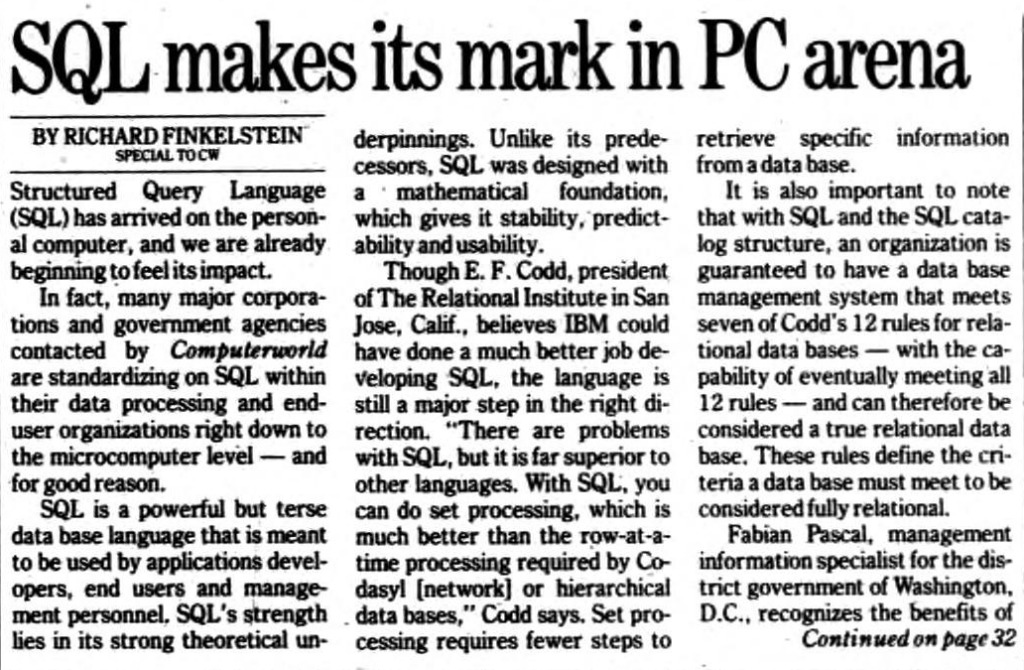Feb. 16, 1987: SQL establishes dominance in database query language arena
In the 1980s, a relational database query language called SQL became widely adopted. SQL is still used extensively today.

The modern age of big data would not have been possible without decades of innovations in computing technology and database management. Throughout the 1970s and 80s, the world saw the invention of many different computer languages and frameworks to organize and query data. Relational database systems, first proposed in the early 1970s, became a massive commercial success in the 1980s. Relational databases store and provide access to data points that are related to each other, such as a customer’s name, address, and payment information.
SQL, which stands for Structured Query Language, was first developed at IBM in the early 1970s. In the 1980s, SQL became the industry standard of relational database querying languages, generating such widespread excitement and rapid adoption that in 1987 Computerworld magazine published an article about it. Computerworld interviewed many major corporations and government agencies that had converted their data processing systems to use SQL, concluding for its readers that “by choosing SQL now, you will not only have a language that can increase application productivity and usability today but will also position your organization to take full advantage of the technological advances of the future.” Computerworld’s prediction was correct — SQL is a ubiquitous technology today, underlying several of the most popular database management systems today. High traffic websites including Facebook, Twitter, and YouTube use SQL to handle billions of user interactions.
What made SQL so popular in 1987? SQL was loved for its “stability, predictability, and usability.” SQL was much more efficient at processing data than other database styles, capable of processing “batches” of data while other languages were limited to “row-at-a-time processing.” Moreover, SQL’s well-defined standards enabled portability between machines. Many considered SQL to be user-friendly, with one interviewee noting, “because of SQL, end users can now do work formerly requiring data processing professionals,” giving his technical staff “more time to work on solving more difficult problems.” Others felt that the plethora of new SQL tools being developed, including graphical interfaces and natural-language query systems, would be important for them to be able to use SQL. The tremendous growth in new SQL tools over the following years contributed to SQL’s continued dominance today.
–By Kathleen Esfahany